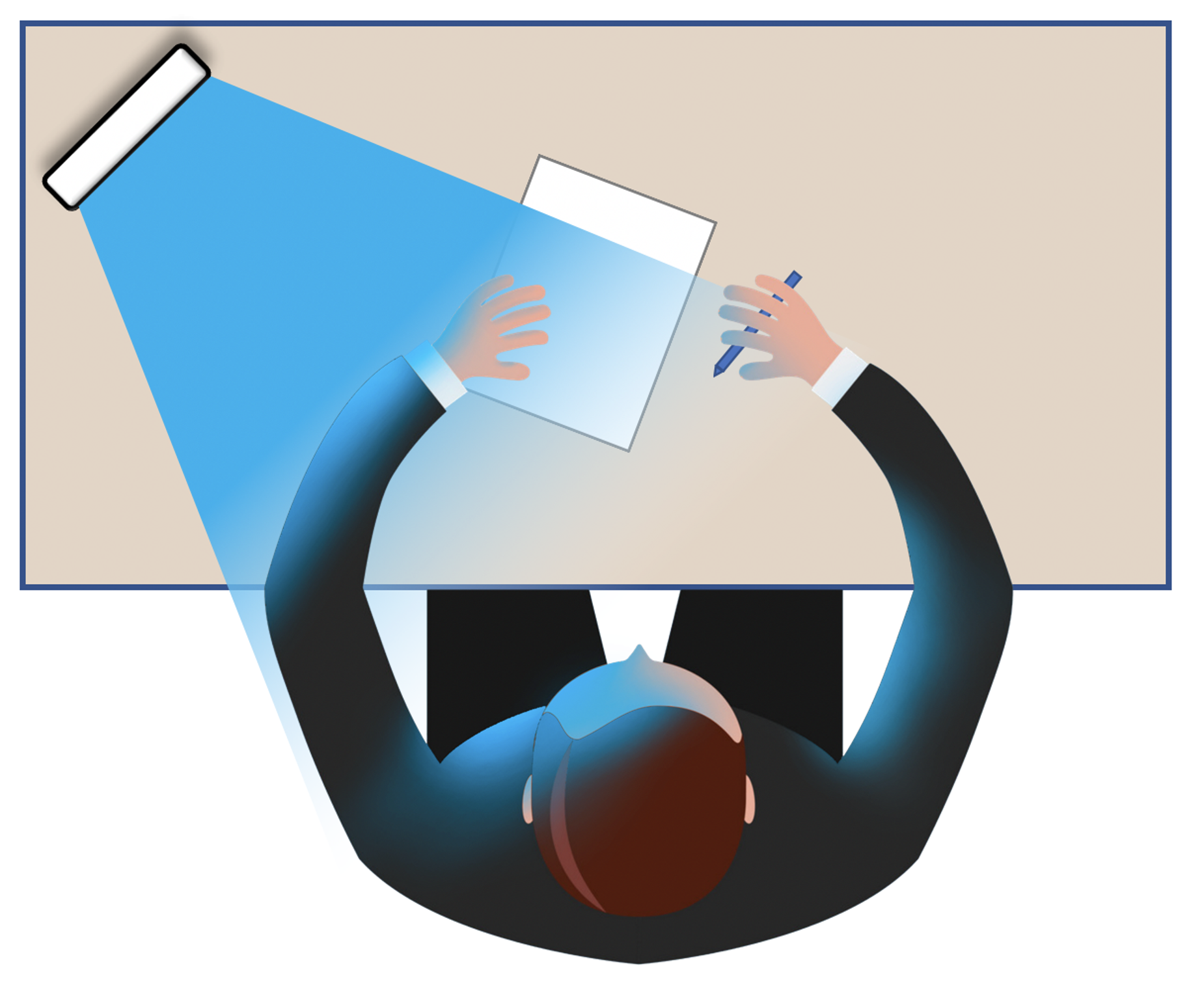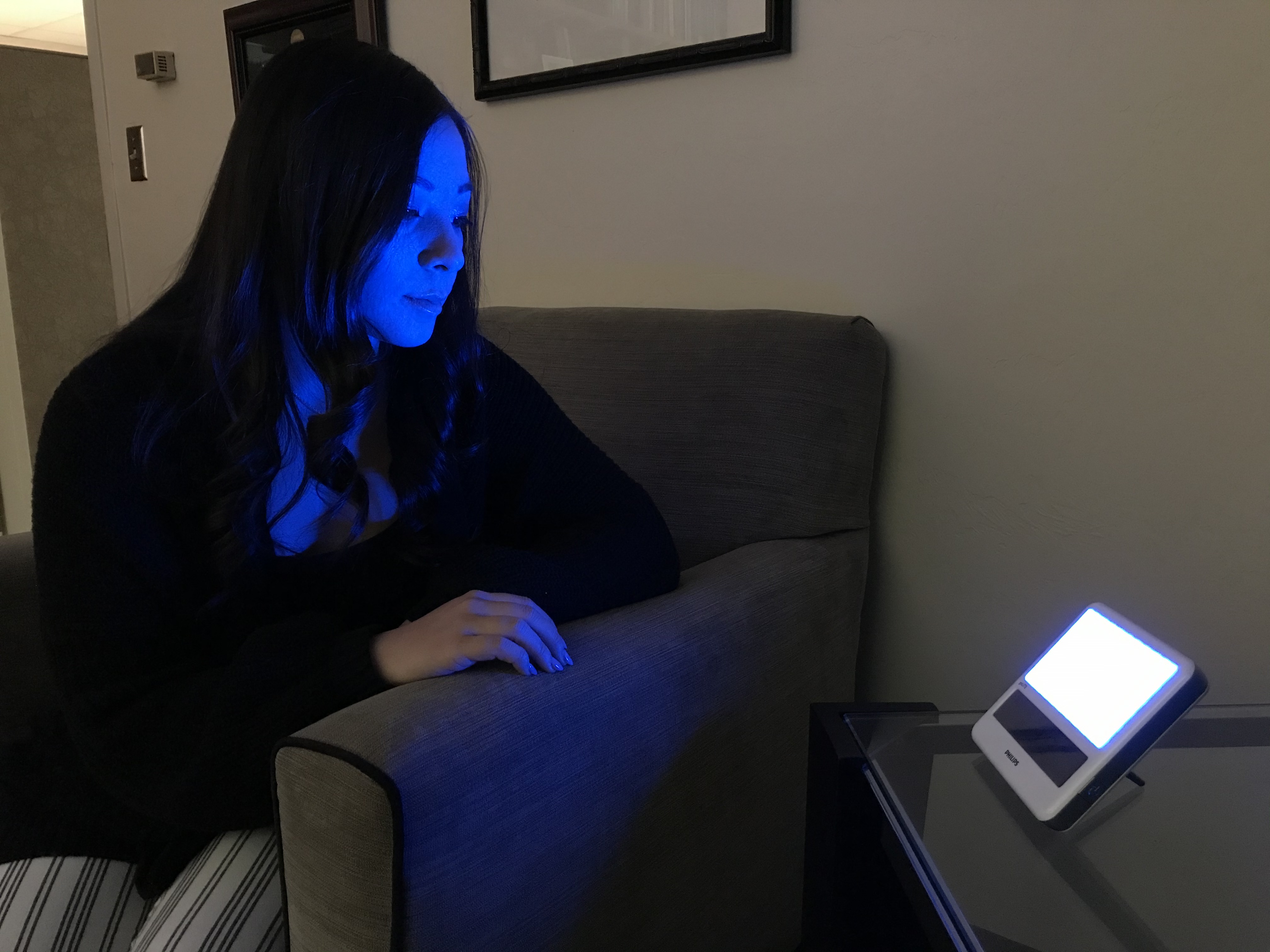Military Operational Medicine (JPC-5)
Blue Light Therapy: A Promising Supplemental Approach to Lessen PTSD Symptom Severity



Posted February 25, 2022
COL William D. "Scott” Killgore, Ph.D., University of Arizona
 Dr. Scott Killgore
Dr. Scott Killgore
U.S. Service Members often experience traumatic events during active duty that can lead to long-term effects in the form of Posttraumatic Stress Disorder (PTSD). Studies indicate 15%-20% of U.S. Soldiers returning from combat experience PTSD, a stress-related psychiatric disorder characterized by hyper-arousal, avoidance, re-experiencing, and sleep disturbances.1,2 PTSD-associated sleep disturbances include insomnia, nightmares, nocturnal anxiety attacks, sleep terrors, and sleep avoidance.2 Evidence suggests that sleep disturbances may impede improvements in PTSD symptoms, indicating the need to treat sleep disturbances in conjunction with PTSD.
 Figure 1: Blue Light Diagram
Figure 1: Blue Light Diagram
COL William D. "Scott” Killgore served 15 years in the U.S. Army Reserve and 5 years as an active-duty Army research psychologist, during which he became interested in studying sleep disturbances. With a Fiscal Year 2013 Psychological Health Award - Applied/Combined Research from the Psychological Health and Traumatic Brain Injury Research Program, COL Killgore and his team investigated the hypotheses that well-timed doses of Blue Light Therapy (BLT) could reset sleep patterns of individuals with PTSD, ease sleep disturbances, and, as a result, reduce PTSD symptoms. Blue light stimulates light-sensitive cells in the eye that communicate with the hypothalamus, a brain structure that is responsible for regulating the circadian rhythm. Previous studies indicate that BLT positively affects sleep, mood, and other illness, but the effects of the therapy on PTSD were not assessed.
With the support of this award, COL Killgore's team conducted the first trial assessing the effects of modification of sleep patterns on PTSD using morning BLT. In a randomized controlled trial, the effects of daily morning BLT were compared to matched exposure to placebo light in a group of 84 individuals diagnosed with PTSD over a 6-week period. The effects of BLT were assessed by examining brain function, symptom severity, fear extinction retention, and sleep assessments pre- and post-intervention. The team hypothesized that BLT would be more effective in resetting sleep cycles than placebo light, resulting in increased sleep duration and improved sleep quality, which would lead to greater retention of fear extinction memories. Preliminary findings from the trial support this idea and indicate BLT may be a useful supplemental treatment for individuals with sleep disturbances related to PTSD, but further studies will be necessary.
 Figure 2: Participant with Blue Light
Figure 2: Participant with Blue Light
This first-ever study assessing the effects of BLT on sleep improvements in adults with PTSD was highly innovative, and preliminary results indicate that morning BLT could be effective in reducing PTSD severity through reset of the circadian rhythm and associated influences on sleep. Additional research is needed to further optimize BLT to best promote decreased sleep disturbances and PTSD-related symptoms. Interestingly, variations in BLT's effectiveness were observed between males and females on some sleep and PTSD variables. Future work will identify differences that influence these responses to BLT and could allow for a precision medicine approach to be applied to the treatment.
BLT is an innovative, cost-effective, low-risk intervention with promising preliminary evidence indicating the potential to lessen the severity of PTSD and other ailments experienced by U.S. Warfighters. If shown to be successful, BLT could bring millions of individuals suffering with PTSD one step closer to managing their disorder and could extend to other ailments related to sleep disturbances.
References:
1Dedert EA, Green KT, Calhoun PS, et al. 2009. Association of trauma exposure with psychiatric morbidity in military veterans who have served since September 11, 2001. Journal of Psychiatric Research 43(9):830-836.
2Capaldi VF, Guerrero ML, and Killgore WDS. 2011. Sleep disruptions among returning combat veterans from Iraq and Afghanistan. Military Medicine 176(8):879-88.
Link:
Public and Technical Abstracts: A Nonpharmacologic Method for Enhancing Sleep in PTSD
Last updated Friday, March 7, 2025














